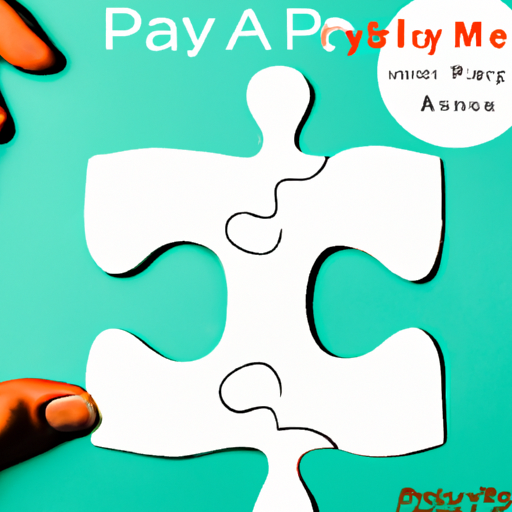In today’s digital era, businesses are constantly seeking ways to enhance their payment processes and provide customized solutions to their customers. This has led to the emergence of Application Programming Interfaces (APIs), which offer the possibility of creating tailor-made payment solutions. By leveraging APIs, businesses can seamlessly integrate payment systems into their own platforms, allowing for a personalized and streamlined payment experience. In this article, we will explore the feasibility of creating custom payment solutions using APIs and the benefits they offer to both businesses and their customers.

Creating Custom Payment Solutions
Understanding APIs
APIs, or Application Programming Interfaces, are essential tools in creating custom payment solutions. In simple terms, an API is a set of rules and protocols that allows different software applications to communicate and exchange information with each other. When it comes to payment solutions, APIs enable seamless integration between your website or application and the payment gateway, facilitating the smooth and secure transfer of payment data.
Benefits of Custom Payment Solutions
Custom payment solutions offer numerous benefits for businesses. By leveraging APIs, you can tailor the payment experience to meet your specific needs and requirements. This customization allows you to provide a seamless and branded payment process, enhancing customer trust and loyalty. Additionally, custom payment solutions enable you to improve the overall user experience, streamline operations, and gain valuable insights into customer behavior and purchasing patterns.
Challenges of Custom Payment Solutions
While custom payment solutions bring many advantages, there are also challenges to consider. Developing and maintaining a custom payment solution requires technical expertise and resources. API integration, security measures, and ongoing maintenance can be complex and time-consuming. Additionally, ensuring compliance with industry standards, such as PCI DSS (Payment Card Industry Data Security Standard), adds another layer of complexity and responsibility.
Choosing the Right Payment Gateway
Selecting the right payment gateway is crucial in creating custom payment solutions. A payment gateway acts as the intermediary between your business, your customers, and the financial institutions involved in processing payments. It is essential to research and choose a payment gateway that aligns with your business needs, offers the necessary APIs for customization, and provides robust security measures. Consider factors such as reliability, scalability, pricing, and compatibility with existing systems.
Utilizing APIs for Custom Payment Solutions
Introduction to APIs
APIs play a central role in custom payment solutions, enabling seamless integration between your website or application and the payment gateway. They allow secure communication and exchange of data, facilitating the authorization, processing, and settlement of payments in real-time. APIs provide a standardized interface that allows developers to create custom payment solutions tailored to their unique business requirements.
API Integration Process
The API integration process involves integrating the payment gateway’s APIs into your website or application. This process typically requires technical expertise and involves tasks such as coding, configuration, and testing. It is crucial to follow the documentation provided by the payment gateway to ensure a smooth and successful integration. APIs may require parameters such as authentication keys, transaction details, and customer information to enable the processing of payments.
API Authentication and Security
Security is of utmost importance in custom payment solutions. APIs often require authentication mechanisms to ensure secure communication between your website or application and the payment gateway. This authentication typically involves unique keys, tokens, or certificates to verify the identity of the parties involved in the transaction. It is crucial to implement encryption protocols and adhere to industry best practices to protect sensitive payment data.
Types of APIs
There are different types of APIs used in custom payment solutions. Some common types include:
-
Payment APIs: These APIs handle the processing and authorization of payment transactions. They often provide functionality to initiate payments, retrieve transaction details, and handle refunds or cancellations.
-
Account APIs: Account APIs enable the management of customer accounts, including storing and updating customer information, managing payment methods, and generating reports.
-
Reporting APIs: Reporting APIs provide access to transaction data and analytics, allowing businesses to gain insights into payment trends, revenue, and customer behavior.
-
Fraud Prevention APIs: Fraud prevention APIs integrate with external fraud detection systems to identify and prevent fraudulent transactions. These APIs analyze various factors and patterns to detect potential fraud in real-time.
Choosing the right APIs for your custom payment solution depends on your specific business requirements and the functionality you aim to provide to your customers.

Building Custom Payment Solutions with APIs
Determining Payment Gateway Requirements
Before building a custom payment solution, it is essential to determine your payment gateway requirements. Consider factors such as the types of payments you want to accept (credit cards, digital wallets, etc.), currencies, and any specific industry regulations that may apply. Evaluate the features and capabilities offered by different payment gateways and choose one that aligns with your business needs.
Designing User Interface
Designing a user-friendly and intuitive user interface (UI) is crucial in creating a positive payment experience for your customers. Consider factors such as the placement and clarity of payment options, the flow of the payment process, and the inclusion of relevant information and feedback. Collaborate with designers and UX experts to ensure a visually appealing and seamless UI that aligns with your brand identity.
Developing API Integration
Once you have determined the payment gateway and designed the user interface, it’s time to develop the API integration. This involves coding and configuring the payment gateway’s APIs to enable the seamless transfer of payment data. It is essential to work closely with developers and ensure proper testing and debugging throughout the development process. Following best practices, such as error handling and data validation, can help avoid issues and ensure a robust integration.
Testing and Quality Assurance
Thorough testing and quality assurance are vital in creating a reliable and secure custom payment solution. Test all aspects of the payment process, including different payment methods, error scenarios, and handling of exceptions. Conduct comprehensive security tests to identify potential vulnerabilities and ensure compliance with industry standards. Investing in thorough testing and quality assurance can help identify and resolve issues before deploying the custom payment solution.
Implementing Custom Payment Solutions
Deployment and Integration
Deploying and integrating a custom payment solution involves making the solution live and integrating it seamlessly with your website or application. Coordinate with your IT team or developers to ensure a smooth transition and minimize any disruptions to your business operations. Conduct thorough testing in a live environment to verify the functionality and security of the payment solution.
Monitoring and Maintenance
Once the custom payment solution is implemented, ongoing monitoring and maintenance are essential to ensure its smooth operation. Monitor transaction data, error logs, and system performance to identify any issues or opportunities for optimization. Regularly update and maintain the solution to address any security vulnerabilities, software updates, or changes in industry regulations. Swiftly respond to any customer feedback or issues to maintain customer satisfaction.
User Adoption and Training
To maximize the effectiveness of your custom payment solution, focus on user adoption and provide training and support to your staff and customers. Communicate the benefits and features of the solution to your customers and address any concerns or questions they may have. Provide comprehensive training to your employees to ensure they understand how to use the solution effectively and handle customer inquiries and issues related to payments.

Securing Custom Payment Solutions
PCI DSS Compliance
Securing custom payment solutions requires compliance with industry standards such as the PCI DSS. The PCI DSS sets guidelines and requirements for securely handling, processing, and storing payment card data. It is crucial to understand and implement the necessary measures outlined in the standards to protect sensitive customer information and prevent data breaches. This may include implementing encryption protocols, restricting data access, and ensuring regular vulnerability scanning and compliance auditing.
Data Encryption and Protection
Encryption is a critical security measure in custom payment solutions. Implement strong encryption protocols to protect payment data during transmission and storage. Utilize secure cryptographic algorithms and apply proper key management practices. Protect stored data through measures such as tokenization or securely storing sensitive data in compliance with PCI DSS requirements. Regularly assess and update encryption measures to adapt to emerging threats and industry best practices.
Fraud Protection Measures
Custom payment solutions must incorporate robust fraud prevention measures to safeguard against fraudulent transactions. Implement fraud detection tools and algorithms that analyze various data points and patterns to identify suspicious activities in real-time. Utilize machine learning and artificial intelligence technologies to continuously enhance fraud detection and prevention capabilities. Stay updated on the latest fraud trends and implement proactive measures to mitigate potential risks.
Scalability and Future-proofing
Scaling Custom Payment Solutions
Scalability is essential to accommodate business growth and changing demands. Ensure your custom payment solution is designed to handle increasing transaction volumes without sacrificing performance or security. Collaborate with your development team to optimize database structures, implement caching mechanisms, and leverage cloud-based infrastructure to scale your payment solution seamlessly. Regularly monitor and analyze system performance to identify opportunities for optimization.
Upgrading APIs for Compatibility
As technology evolves, APIs may require upgrades or updates to maintain compatibility with new systems and industry standards. Stay informed about the latest API developments and communicate with your payment gateway provider to ensure the availability of updated versions. Regularly review and update API integrations to take advantage of new features, enhance security, and address any compatibility issues that may arise.
Adopting New Technologies
To future-proof your custom payment solution, be open to adopting new technologies and innovations in the payment industry. Embrace emerging payment methods such as mobile payments, digital wallets, or cryptocurrency payments based on your target audience and industry trends. Keep an eye on advancements in security technologies, such as biometric authentication or multi-factor authentication, to enhance the security of your payment solution.

Cost Considerations
Initial Investment
Creating custom payment solutions using APIs requires an initial investment in development and integration. Consider factors such as development costs, API licensing fees, and any additional hardware or software requirements. Collaborate with your finance team or business stakeholders to accurately estimate the initial investment needed to create and implement the custom payment solution.
Transaction Fees and Charges
Apart from the initial investment, it is essential to consider the transaction fees and charges associated with using the payment gateway. Payment gateways typically charge a percentage or fixed fee per transaction processed. Evaluate your projected transaction volumes and revenue to assess the financial impact of these transaction fees. Consider negotiating pricing structures with your payment gateway provider based on your business volume and growth projections.
Maintenance and Upgrades
Maintenance and upgrades are ongoing costs associated with custom payment solutions. As technology evolves and security measures change, it is essential to allocate resources for regular maintenance, system updates, and API upgrades. Stay updated on pricing models offered by your payment gateway provider and factor in the costs associated with ongoing maintenance and upgrades when evaluating the long-term financial viability of your custom payment solution.
Success Stories: Examples of Custom Payment Solutions
Custom Payment Solutions for E-commerce
In the e-commerce industry, custom payment solutions have played a significant role in enhancing customer experiences. One example is the implementation of digital wallets and one-click payments, allowing customers to make purchases quickly and securely. Custom payment solutions have also facilitated seamless integration with customer relationship management (CRM) systems, enabling businesses to understand customer behavior, personalize offerings, and increase conversion rates.
Custom Payment Solutions for Subscription Services
Subscription-based businesses have benefitted greatly from custom payment solutions. These solutions enable recurring billing, automatic renewals, and flexible subscription management. By integrating APIs, businesses can offer trial periods, upsells, and personalized plans, enhancing customer satisfaction and retention. Custom payment solutions have empowered subscription businesses to scale their operations and automate payment processes, reducing manual efforts and minimizing billing errors.
Case Study: XYZ Company
XYZ Company, a leading online marketplace, utilized custom payment solutions to streamline their payment processes and improve customer satisfaction. By leveraging APIs, they designed a user-friendly payment interface with multiple payment options, including credit cards and digital wallets. The custom payment solution integrated seamlessly with their existing CRM system, allowing them to analyze customer data and provide personalized recommendations. This resulted in increased customer engagement, higher conversion rates, and improved customer loyalty.

Conclusion
Creating custom payment solutions using APIs offers businesses the opportunity to tailor the payment experience to their unique needs and requirements. By understanding APIs, leveraging their benefits, and addressing the associated challenges, businesses can design and implement secure and efficient payment solutions. Careful consideration of factors such as payment gateway selection, API integration, and security measures ensures a smooth and successful implementation. With the right approach, custom payment solutions can drive growth, enhance customer experiences, and contribute to long-term business success.
